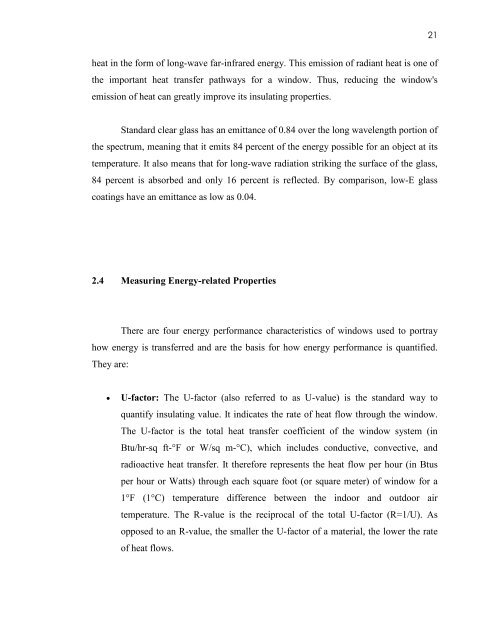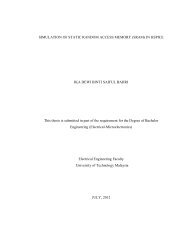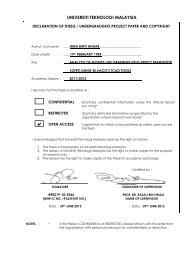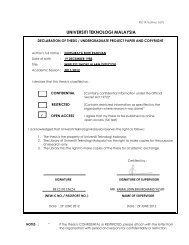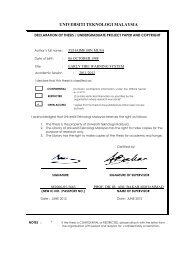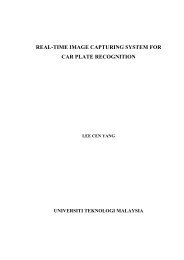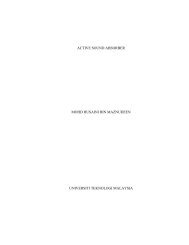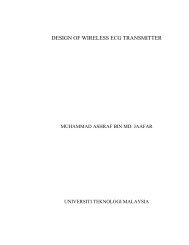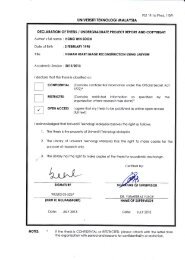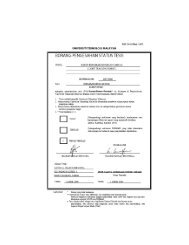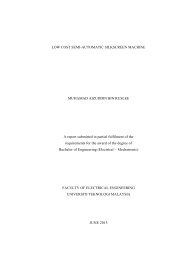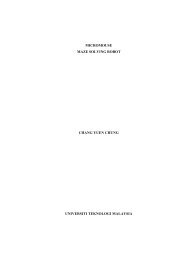borang pengesahan status tesis - Faculty of Electrical Engineering
borang pengesahan status tesis - Faculty of Electrical Engineering
borang pengesahan status tesis - Faculty of Electrical Engineering
Create successful ePaper yourself
Turn your PDF publications into a flip-book with our unique Google optimized e-Paper software.
21<br />
heat in the form <strong>of</strong> long-wave far-infrared energy. This emission <strong>of</strong> radiant heat is one <strong>of</strong><br />
the important heat transfer pathways for a window. Thus, reducing the window's<br />
emission <strong>of</strong> heat can greatly improve its insulating properties.<br />
Standard clear glass has an emittance <strong>of</strong> 0.84 over the long wavelength portion <strong>of</strong><br />
the spectrum, meaning that it emits 84 percent <strong>of</strong> the energy possible for an object at its<br />
temperature. It also means that for long-wave radiation striking the surface <strong>of</strong> the glass,<br />
84 percent is absorbed and only 16 percent is reflected. By comparison, low-E glass<br />
coatings have an emittance as low as 0.04.<br />
2.4 Measuring Energy-related Properties<br />
There are four energy performance characteristics <strong>of</strong> windows used to portray<br />
how energy is transferred and are the basis for how energy performance is quantified.<br />
They are:<br />
• U-factor: The U-factor (also referred to as U-value) is the standard way to<br />
quantify insulating value. It indicates the rate <strong>of</strong> heat flow through the window.<br />
The U-factor is the total heat transfer coefficient <strong>of</strong> the window system (in<br />
Btu/hr-sq ft-°F or W/sq m-°C), which includes conductive, convective, and<br />
radioactive heat transfer. It therefore represents the heat flow per hour (in Btus<br />
per hour or Watts) through each square foot (or square meter) <strong>of</strong> window for a<br />
1°F (1°C) temperature difference between the indoor and outdoor air<br />
temperature. The R-value is the reciprocal <strong>of</strong> the total U-factor (R=1/U). As<br />
opposed to an R-value, the smaller the U-factor <strong>of</strong> a material, the lower the rate<br />
<strong>of</strong> heat flows.


